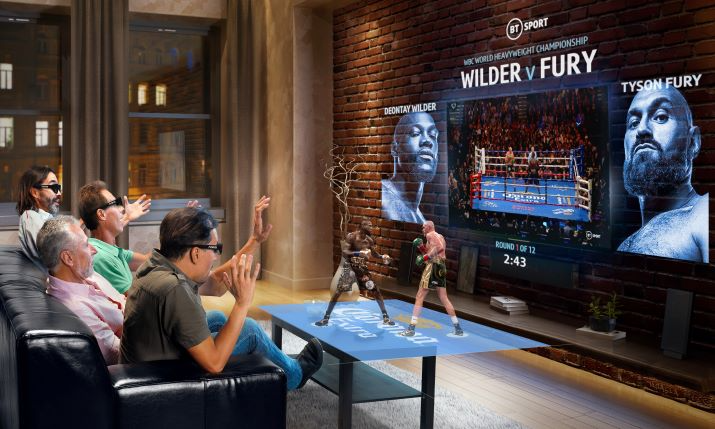The implementation of Augmented Reality -AR- in sports leads to major changes in how people benefit and enjoy sporting events.
In addition, AR provides professional players and coaches with valuable insights, significantly helping to improve their performance.
But that’s not all, since the implementation of AR in sports represents an opportunity both for companies working in the sports and entertainment industry to enhance their market potential globally and for companies engaged in AR to find new financial entries.
How can AR improve the sporting experience both for players in the arena and for audiences watching them?
On-field decision making, enhanced training, innovative marketing initiatives for the sports field, and more engaging broadcasts for home viewers are examples of the new AR applications in the sector.
Starting from On-field decision making, AR can reduce human errors enormously. As we know, even a small human mistake made by an official can have enormous consequences for the involved players or teams; therefore, implementing AR for the revision of decisions that officials may have incorrectly judged could change the result of the game offering more fair play possibilities. In sports events, as major league baseball and soccer leagues worldwide, AR solutions for on-field decision making are being implemented.
Continuing, the Hawk-eye system is noteworthy, being one of the most widely used applications of AR in sports such as tennis, badminton, football, and volleyball. This technology tracks the path of the ball or other objects visually foreseeing the object’s most likely path.
Finally, coaches and support staff can also take advantage of AR, guiding players and developing strategies in real-time replacing the traditional pen and paper method.
Concerning enhanced training, technology is always being an additional bonus. In the case of AR, it can help players to understand their playing style more effectively and improving their game significantly rectifying their actions and adopting better techniques by overlaying data over the real world or incorporating data in pre-recorded videos. It is not all since this innovative technology can also be used for studying the opponents’ strategies and for plan counteractive strategies.
Major sporting events are broadcasted and watched worldwide. AR can provide a more engaging broadcast for home viewers while also increasing traffic to the broadcasting station. The majority of sporting events already include AR technology in the form of 3D graphics and other interactive content but, in addition, AR can be used to provide in-depth analysis of the game by superimposing data on video replays through which experts can suggest alternative plays based on their experience and knowledge, providing viewers at home with a better understanding of the game.
Regarding how to enhance marketing initiatives, we know that technologies such as AR can allow more engaging and interactive publicity, making every stand, brochure, poster, or even the field or stadium more entertaining.
In addition, AR can help businesses to access customer information that are very useful in making ADV decisions to personalise campaigns.
Finally, we are experiencing how, with a large adoption of AR in sports, the overall quality of the game increases, both greatly improving the professional’s performance and by making the overall sport event more engaging and entertaining for the fans.
This shows that AR holds a lot of potential for players, audiences, and even businesses in the sports industry, that with the technological advances that we are about to experience in the coming years, will make the possibilities of AR applied to sport practically limitless.


